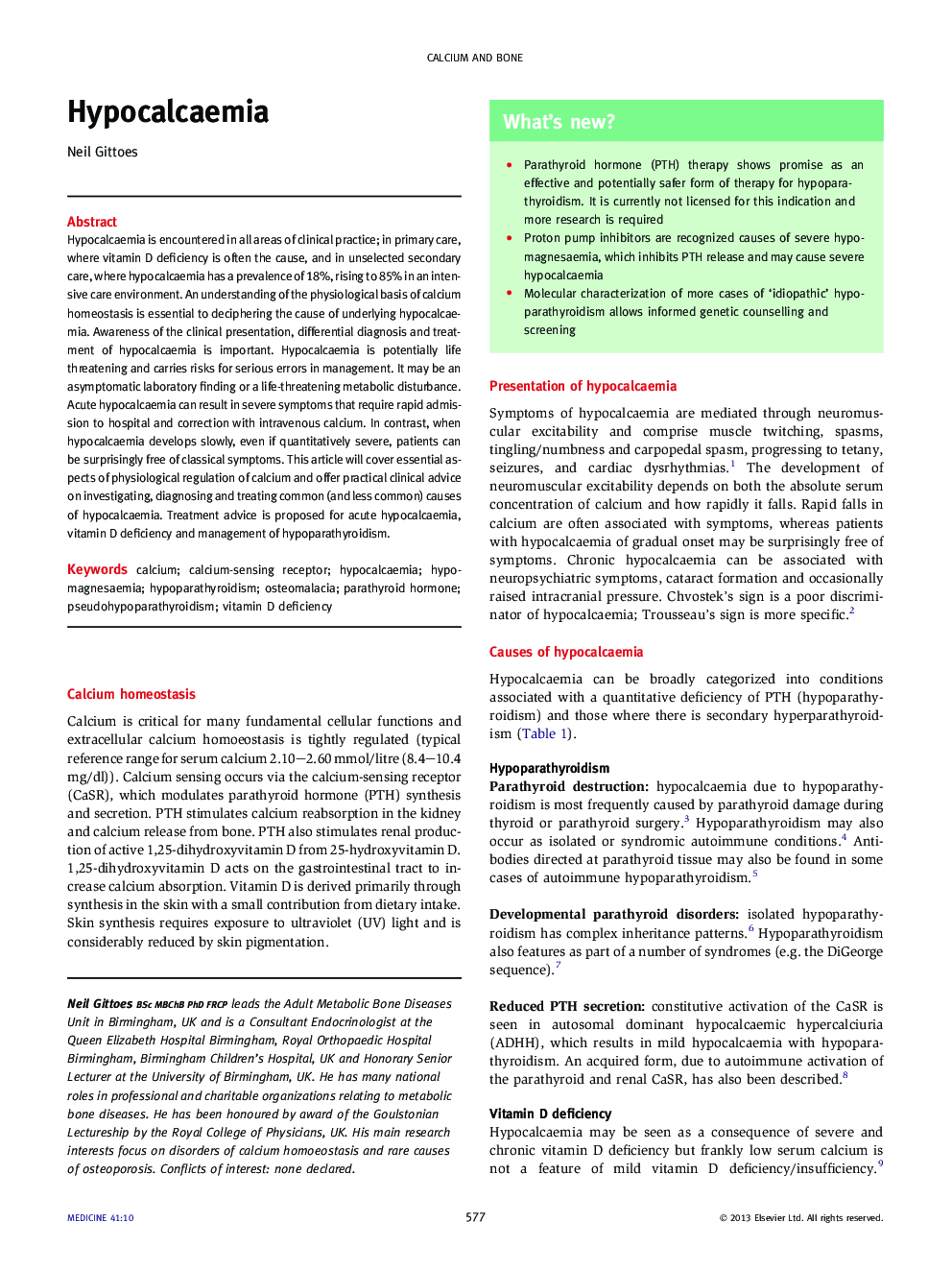| کد مقاله | کد نشریه | سال انتشار | مقاله انگلیسی | نسخه تمام متن |
|---|---|---|---|---|
| 3803808 | 1244963 | 2013 | 4 صفحه PDF | دانلود رایگان |

Hypocalcaemia is encountered in all areas of clinical practice; in primary care, where vitamin D deficiency is often the cause, and in unselected secondary care, where hypocalcaemia has a prevalence of 18%, rising to 85% in an intensive care environment. An understanding of the physiological basis of calcium homeostasis is essential to deciphering the cause of underlying hypocalcaemia. Awareness of the clinical presentation, differential diagnosis and treatment of hypocalcaemia is important. Hypocalcaemia is potentially life threatening and carries risks for serious errors in management. It may be an asymptomatic laboratory finding or a life-threatening metabolic disturbance. Acute hypocalcaemia can result in severe symptoms that require rapid admission to hospital and correction with intravenous calcium. In contrast, when hypocalcaemia develops slowly, even if quantitatively severe, patients can be surprisingly free of classical symptoms. This article will cover essential aspects of physiological regulation of calcium and offer practical clinical advice on investigating, diagnosing and treating common (and less common) causes of hypocalcaemia. Treatment advice is proposed for acute hypocalcaemia, vitamin D deficiency and management of hypoparathyroidism.
Journal: Medicine - Volume 41, Issue 10, October 2013, Pages 577–580